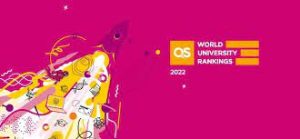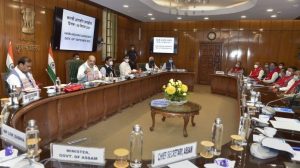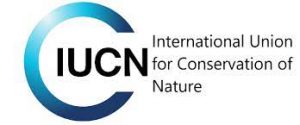Today Current Affairs: 7th September 2021 for UPSC IAS exams, State PSC exams, SSC CGL, State SSC, RRB, Railways, Banking Exam & IBPS, etc
Table of Contents
World University Rankings 2022 Edition:

The Times Higher Education (THE) recently released its World University Rankings 2022 edition.
- THE, formerly known as The Times Higher Education Supplement (THES), is a magazine reporting specifically on news and issues related to higher education.
- Earlier, Quacquarelli Symonds (QS) released the QS World University Rankings 2022.
- The rankings cover the four main areas of university activity: teaching, research, knowledge transfer and international outlook and THE has been releasing data since 2004.
India’s Ranking:
- Overall, India is home to 35 of the world’s top 1,000 universities, its second-highest total ever in the rankings. Last year, it was 36.
- Top Performer was Indian Institute of Science (IISc) followed by IIT Ropar and JSS Academy of Higher Education and Research.
Global Ranking:
- Globally, the University of Oxford tops the ranking for the sixth consecutive year, while mainland China’s Tsinghua University becomes the first Asian university to break into the top 20 under the current methodology (launched in 2011).
- Country-wise, the US is the most-represented country overall with 183 institutions.
Singapore-India Maritime Bilateral Exercise (SIMBEX):

India and Singapore have carried out 28th edition of the Singapore-India Maritime Bilateral Exercise (SIMBEX).
- Initiated in 1994, SIMBEX is the Indian Navy’s longest uninterrupted bilateral maritime exercise with any foreign navy.
- 28th edition of SIMBEX was a mega naval wargame in the southern fringes of the South China Sea, in reflection of their growing congruence of interests in the strategically key region.
- Other Defence Cooperation:
- Both navies have a representation in each other’s Maritime Information Fusion Centres and have also recently signed an agreement on mutual submarine rescue support and coordination.
- Singapore participates in Indian Ocean Naval Symposium (IONS) and multilateral exercise MILAN hosted by the Indian Navy.
- Singapore’s membership of Indian Ocean Rim Association (IORA) and India’s membership of ADDM+ (ASEAN Defence Ministers’ Meeting – Plus) provides a platform for both countries to coordinate positions on regional issues of mutual concern.
Hycean Worlds: Exoplanets:

Some astronomers have identified a new class of exoplanets – Hycean worlds.
- The word Hycean comes from the words hydrogen and ocean. Planet-wide oceans and hydrogen-rich atmospheres might cover these worlds.
- They are also uniquely alien, up to 2.6 times the diameter of Earth, with temperatures up to 200 degrees celsius and thick hydrogen atmospheres.
- This places them somewhere between Earth and giant planets like Neptune or Uranus.
- With no analogs in the Solar System, these planets are variedly classed as super-Earths or mini-Neptunes depending on inferences about their bulk compositions based on their densities.
- These planets, unlike most mini-Neptunes, may have solid surfaces, like Earth. Many of the known Hycean candidates are larger and hotter than Earth, but still would be able to host large oceans.
- Some Hyceans orbit so close to their stars that they’re tidally locked, with one hot dayside and one eternally dark nightside. And some orbit very far away, receiving very little stellar radiation. But life could exist even on such extreme Hyceans.
- Tidal locking is the name given to the situation when an object’s orbital period matches its rotational period.
Eight Major Banks Have Joined The Account Aggregator (AA) Network:

Eight major banks have joined the Account Aggregator (AA) network that will enable customers to easily access and share their financial data
- An AA is a framework that simply facilitates sharing of financial information in a real-time and data-blind manner (Data flow through AA are encrypted) between regulated entities (Banks and NBFCs).
- The RBI (Reserve Bank of India) in 2016 approved AA as a new class of NBFC (Non Banking Financial Companies), whose primary responsibility is to facilitate the transfer of user’s financial data with their explicit consent.
- AAs enable flow of data between Financial Information Providers (FIPs) and Financial Information Users (FIUs).
- The architecture of AA is based on the Data Empowerment and Protection Architecture (DEPA) framework.
- DEPA is an architecture that lets users securely access their data and share the same with third parties.
Karbi Anglong Agreement:

A tripartite agreement among five insurgent groups of Assam, the Centre and the state government was signed.
- This agreement is in synergy with the vision of Insurgency free prosperous North East, that envisages all-round development of northeast, peace and prosperity.
Highlights of the Karbi-Anglong Peace Agreement:
- Karbi Outfits Surrendered: 5 militant organizations (KLNLF, PDCK, UPLA, KPLT and KLF) laid down arms and more than 1000 of their armed cadres have given up violence and joined the mainstream of society.
- Special Development Package: A special development package of Rs. 1000 crore will be allocated over five years by the Central Government and the Assam Government to take up special projects for the development of Karbi areas.
- More Autonomy to KAAC: This agreement will transfer as much autonomy as possible in exercising their rights to the Karbi Anglong Autonomous Council, without affecting the territorial and administrative integrity of Assam.
- Overall, the present agreement proposes to give more legislative, executive, administrative and financial powers to the KAAC.
- Rehabilitation: A provision has been made in this agreement to rehabilitate the cadres of armed groups.
- Development of Local People: The Government of Assam will set up a Karbi Welfare Council to focus on the development of the Karbi people living outside the KAAC area.
- This agreement will also ensure the protection of the culture, identity, language, etc. of the Karbi people and all-round development of the region.
- The Consolidated Fund of the State will be amended to meet the resources of the KAAC.
Brahmani River:

Environmentalists expressed concern over the massive diversion of fresh water from the Brahmani river basin, which could pose a grave threat to the famous mangrove vegetation in Odisha.
- The Talcher-Angul coal mines, steel and power plants as well as the Kalinganagar steel and power hub are drawing enormous quantities of fresh water from the Brahmani river
- The Brahmani is a major seasonal river in the Odisha state of eastern India. The Brahmani is formed by the confluence of the Sankh and South Koel rivers.
- Together with the river Baitarani, it forms a large delta before emptying into the Bay of Bengal at Dhamra.
- Bhitarkanika — a notified Ramsar wetland — is spread over 195 sq. km and is home to 62 mangrove species. Proportionate fresh water flow from the Brahmani river basin and the Kharasrota river keep the salinity level of the water along the shore down.
Footprints Of Three Species Of Dinosaurs Have Been Found:

Footprints of three species of dinosaurs have been found in the Thar desert in Rajasthan’s Jaisalmer district, proving the presence of the giant reptiles in the western part of the State, which formed the seashore to the Tethys Ocean during the Mesozoic era.
- The footprints, made in the sediment or silt of the seashore, later became permanently stone-like. They belong to three species of dinosaurs —
- Eubrontes cf. giganteus,
- Eubrontes glenrosensis and
- Grallator tenuis.
- While the giganteus and glenrosensis species have 35 cm footprints, the footprint of the third species was found to be 5.5 cm.
- The footprints were 200 million years old. They were found near Jaisalmer’s Thaiat village.
- The dinosaur species are considered to be of the theropod type, with the distinguishing features of hollow bones and feet with three digits. All the three species, belonging to the early Jurassic period, were carnivorous.
International Union For The Conservation Of Nature (IUCN)

Some 28% of the 1,38,374 species assessed by the International Union for the Conservation of Nature (IUCN) for its survival watchlist are now at high risk of vanishing forever, the global conservation body said.
- Habitat loss, overexploitation and illegal trade have hammered global wildlife populations for decades, and climate change is now kicking in as a direct threat as well.
- Komodo dragons, the largest living lizards, which are found only in the World Heritage-listed Komodo National Park and neighbouring Flores, were listed as “endangered”.
- Some 37% of the 1,200 shark and ray species assessed by experts are directly threatened by extinction, a third more than only seven years ago.
- The IUCN officially launched its “green status” — the first global standard for assessing species recovery and measuring conservation impacts.
- It makes the invisible work of conservation visible.
Nipah Virus:

After a gap of over three years, a case of the zoonotic Nipah virus infection has been reported in Kozhikode district of Kerala.
- A contact list of 188 persons, a majority of them healthcare workers, has been prepared. Symptomatic persons will be shifted to hospital.
- At a time when there is a relentless surge in Covid-19 infections in Kerala, accounting for a lion’s share of the nationwide case load, the return of the dreaded Nipah virus to the State is a cause for major concern.
- This is the time for the Centre and the State government to take up containment measures with mutual trust and coordination.
- There are urgent steps that need to be taken jointly, including contact tracing, quarantine, isolation, collection, and transportation of samples for lab testing and a detailed study of the surrounding areas by the National Centre for Disease Control from an epidemiological standpoint.
Nipah:
- It is a zoonotic virus (it is transmitted from animals to humans).
It first broke out in Malaysia and Singapore in 1998 and 1999.
It first appeared in domestic pigs and has been found among several species of domestic animals including dogs, cats, goats, horses and sheep.
Spread: The virus is transmitted to people from animals and can also be passed on through contaminated food or directly from person-to-person. - Fruit bats are considered to be a natural reservoir of the virus.
- Symptoms include acute encephalitis and respiratory illnesses.




